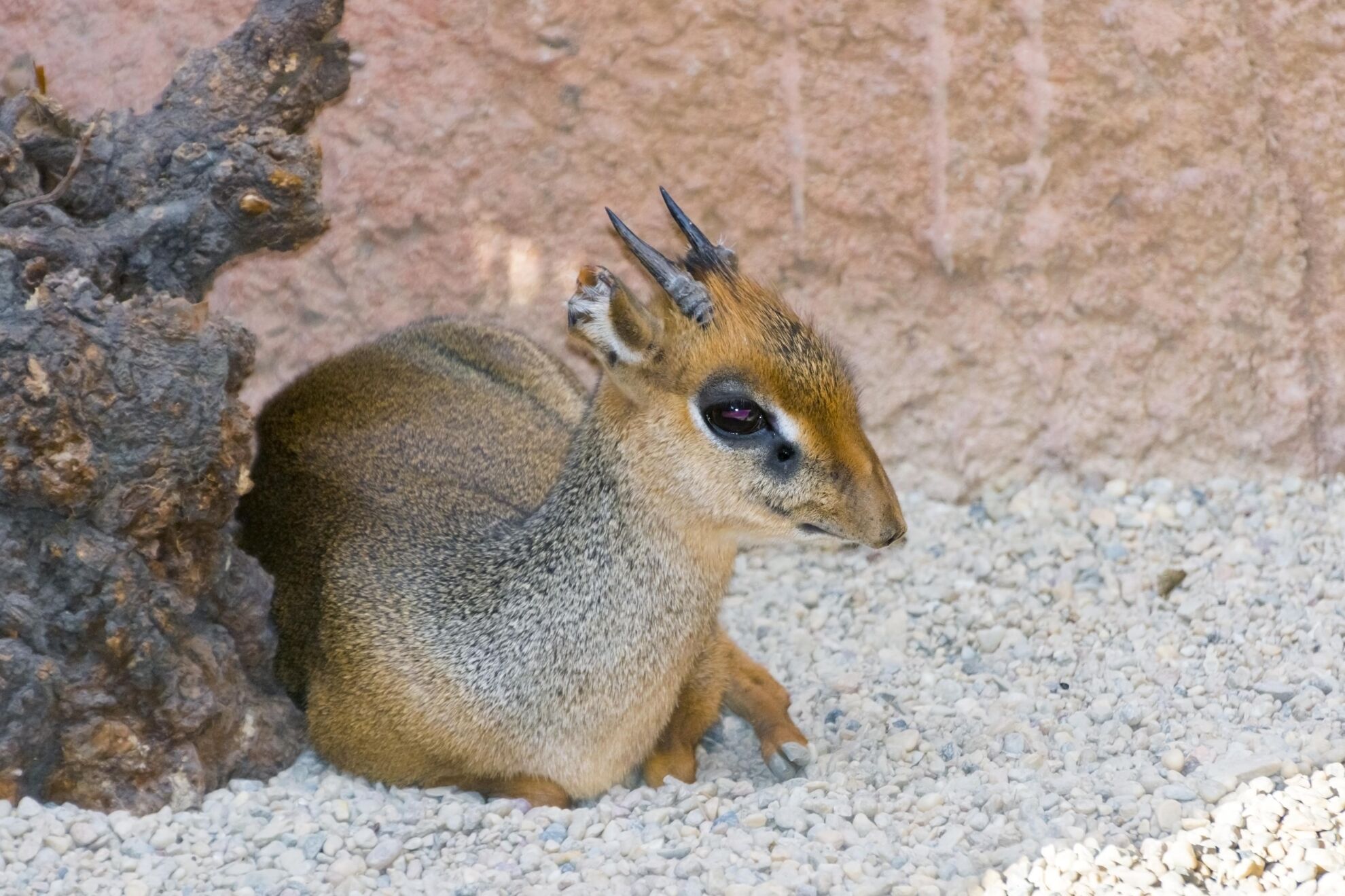

The Salt’s Dik-dik (Madoqua saltiana) is a tiny antelope found in dry African areas and is named after Henry Salt, the first European to acknowledge this species. These delicate antelopes are found in numerous countries within the Horn of Africa and surrounds, including Ethiopia, Eritrea, Somalia, Djibouti, Sudan, and Kenya.
This minute antelope prefers a habitat including low, dense vegetation where it can both scavenge for food or hide and keep an eagle eye out for danger or predators. They live in thickets, bushlands and shrublands, preferring an arid climate where they live in solitude, in pairs or as small family units. The name “dik-dik” is derived from the recognizable “dik-dik” or “zik-zik” call they make to alert others of danger.
Their diet consists of leaves, roots, and bulbs, as well as flowers and pods that are sometimes dropped by larger African plains game species in the area.
An Ethiopian safari hunt targeting this minute antelope provides a great challenge for any hunter, but humans are not the only dangers faced by the Salt’s Dik-dik. Predators of this antelope include Caracals, Wild Dogs, Lions, Leopards, Jackals, Cheetahs, large Birds of Prey, Pythons, and Baboons, amongst others.
The Salt’s Dik-dik has a gestation period of between 166-170 days, with females giving birth to a single fawn. Some females give birth twice a year, with two definite birth peak periods noticeable in this East African antelope.
Their IUCN status is listed as that of Least Concern.
Name:
Madoqua saltiana
Male Weight:
5,9-8,8 pounds
Male Shoulder height:
13-16 inches
Range:
Horn of Africa, Red Sea Coastal Plain, Northern Kenya, Southern Sudan
Mating:
Throughout the Year
Gestation Period:
166-180 days
Life span:
< 10 years
The Salt’s Dik-dik has a thick, speckled gray coat, with light gray flanks. Their legs, nose and forehead are a reddish-brown color while it sports white rings around the eyes. Only males of the species have small horns reaching between 1,3 to 8,8 inches.
Hunters need to be patient and engage in spot-and-stalk techniques when Salt Dik-dik hunting in Ethiopia. Be patient and slowly make your way through their chosen habitat early in the morning or late afternoon, when they are most likely to be active.
This antelope might be tiny, but it’s fast, reaching speeds of up to 26 miles per hour. Add to this speed an elusive antelope with a wary nature, and the challenge is easy to see. This species is extremely vigilant with excellent eyesight, making them a challenge to stalk without being detected. The ultimate reward of a unique and diminutive hunting trophy to add to any trophy room is clear, but this Ethiopian safari hunt also shows the hunter’s skills and patience in stalking and harvesting the Salt’s Dik-dik in challenging conditions.
On this Ethiopian safari hunt, a small rifle such as a .22 would work well in harvesting this tiny antelope. You need to consider a caliber that would provide minimal damage to the small trophy while still humanely killing the animal.
Search from our range of Hunts across various popular destinations in Africa.
Find A Hunt